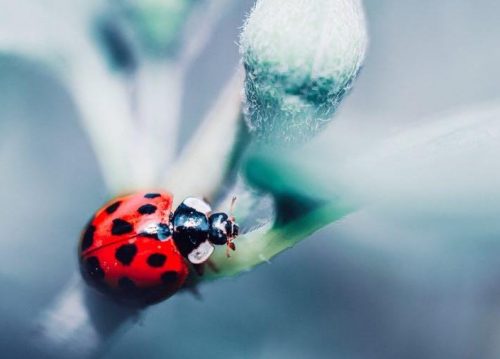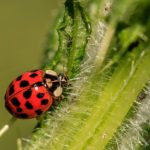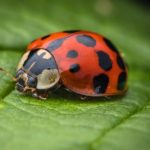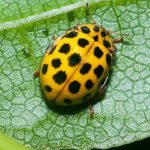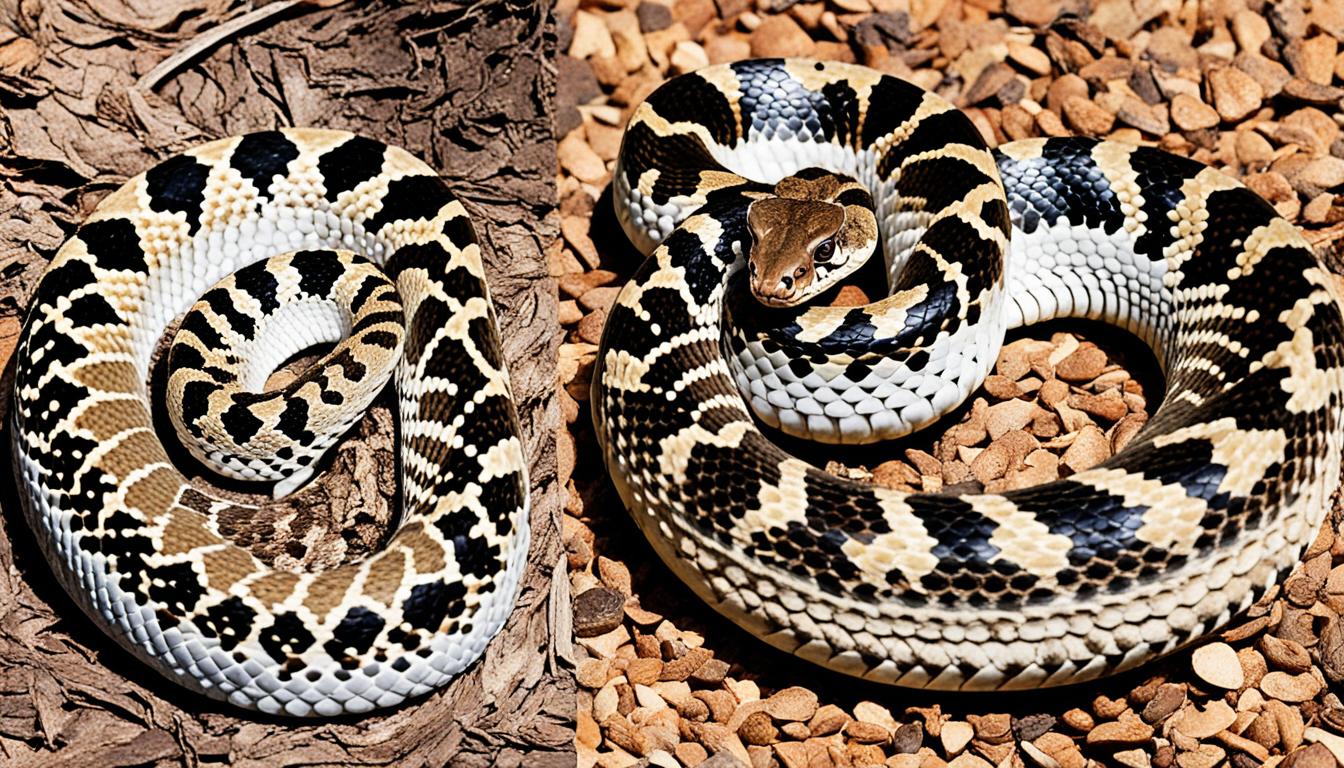They require a location in which they may congregate with hundreds or thousands of other beetles in order to survive. Because of this, they are sheltered from the elements and are able to avoid freezing. They will make their winter homes in cracks, fissures, under the bark of trees, and even in your home or on your roof if they can.
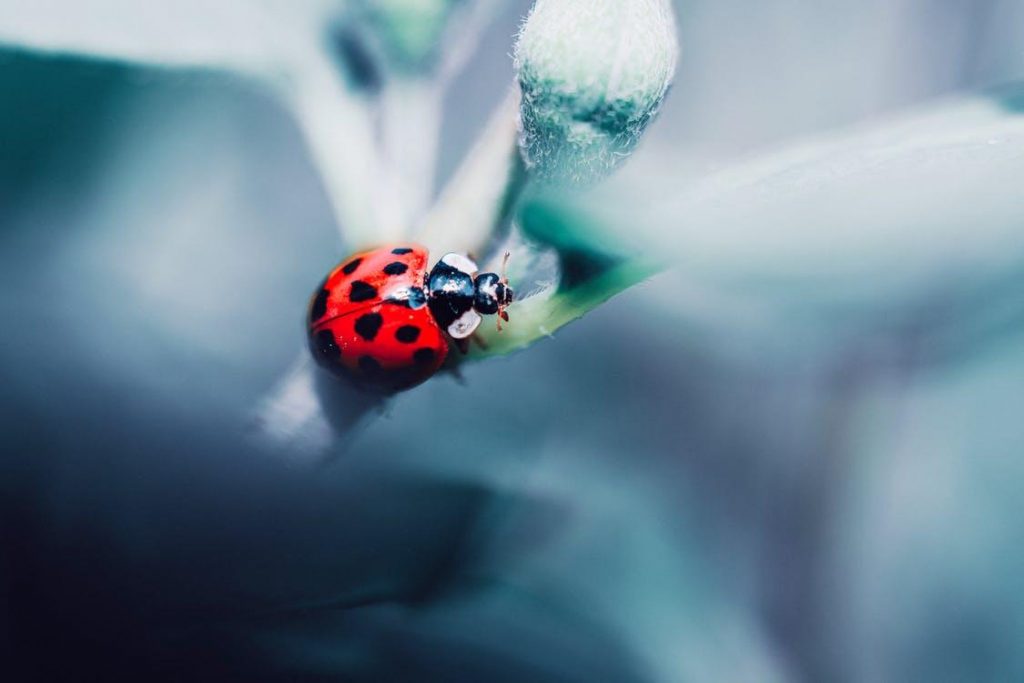
What to do if you find a ladybug in the winter?
A well-known entomologist Dr. Stoner recommends that homeowners store their lady beetles in a glass jar with a cover that has holes pierced into it if they want to keep them alive through the winter. They won’t need to eat again until the beginning of spring, when they may finally be set free. To get them out of the house, sweep them gently into a paper bag and then set them free.
Where do ladybugs hibernate?
The spring through fall seasons is when ladybugs are at their most active. They search for a warm, isolated location to hibernate when the weather turns cold, such as beneath decaying logs, behind rocks, or even within buildings. These colonies, which are now dormant, may house hundreds of thousands of ladybugs.
What is special about ladybugs?
During the colder months, ladybugs enter a state known as diapause, which is similar to hibernation. They are able to maintain their body temperature and subsist off of their own stored energy stores once they have located a safe and warm location. In point of fact, ladybugs can remain dormant for as long as nine months at a time.
Do ladybugs come out in the cold?
After they have located a suitably warm area, they simply enter a dormant state and bunker down for the winter. According to Kirby, “They will remain out of sight for the majority of the winter.” “However, as spring arrives and the weather gets warmer, or if for some reason, the temperature in their small room rises, you will begin to see them once more at your windows.
Do ladybugs need water?
Ladybugs do consume water as part of their nutrition. They typically obtain the necessary quantity from the moisture that is included in the food that they consume. For this reason, they do not necessarily need to be located in close proximity to conventional sources of water. But in times of famine or when they need more hydration, they will drink water straight from the source.
How long do ladybugs live?
The development and growth of the larva will take around a month, and then it will reach the pupal stage, which lasts for about 15 days. Once it has emerged from its pupal stage, the adult ladybug can survive for up to a year.
How long do ladybugs live without food?
It is predicted that a ladybug will only survive without food for around two days if the loss of its food supply was caused by something other than natural causes. They expend a lot of energy during the day because of their high-protein diet and the fact that they are such powerful flyers. In the event that the meal they favor is unavailable, they have access to other options for food to consume.
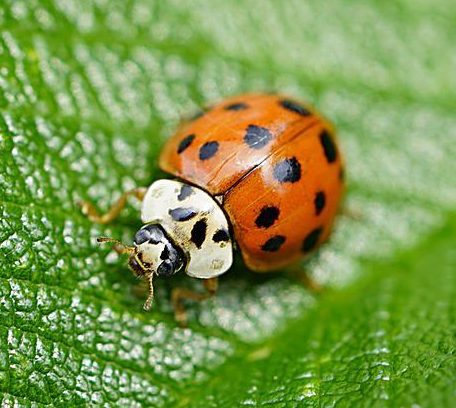
How Do Ladybugs Stay Hydrated During the Winter?
Ladybugs have a remarkable way of regulating their ladybug water consumption explanation during winter. They avoid freezing by entering a state called diapause. In this phase, ladybugs reduce their metabolic rate and become less active. They find shelter in leaf litter, tree bark, or other protected areas, conserving moisture and minimizing water loss. This survival adaptation allows them to endure the harsh winter months without depleting their hydration levels.
What purpose do ladybugs serve?
Ladybugs, sometimes known as lady beetles, are regarded as helpful insects because they assist in clearing an area of crop-damaging aphids, mealybugs, and other harmful insect pests. These are the insects that the adult ladybugs feast on. Additionally, they will deposit their eggs among the aphids or other prey in order to ensure that the hatching larvae will also be able to feed on the prey.

